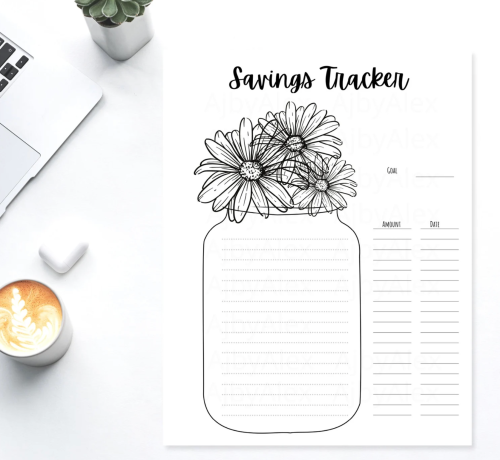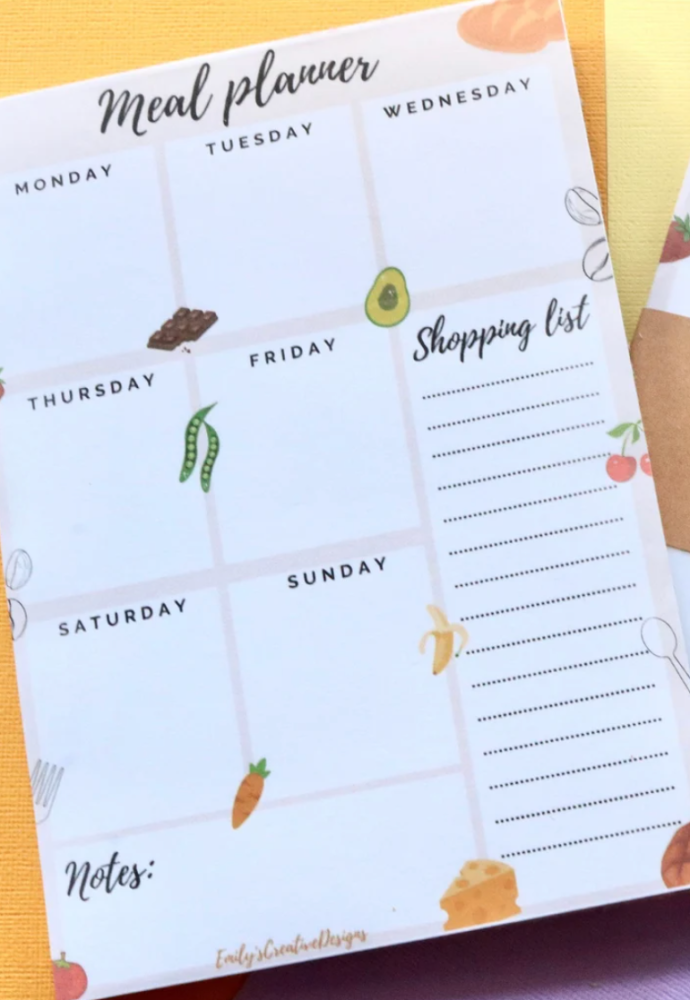Money Saving Challenges To Try In The New Year
Posted on
Saving money can be a challenge, especially with all the temptations and expenses that life throws our way. But with the right mindset and a few smart strategies, you can start to build up your savings and achieve your financial goals. To help you get started, we've compiled a list of 23 money-saving challenges you can try in 2023.
From cutting out non-essential expenses to automating your savings, these challenges will help you save money in a fun and rewarding way. So why wait? Start saving today and see how much you can accomplish in the New Year.

23 Money Saving Challenges To Try In 2023
Below we will list 23 ways you can start to save money in 2023. These are just some ideas to help you save more money on everyday expenditures or to boost your savings accounts. Hopefully, you will find some money challenges below that appeal to you and can be easily implemented into your lifestyle. Best of luck!
-
The "no spend" challenge
Have a "no spend" day each week, or a week each month, or if you really want to challenge yourself try a no spend month or even a whole year! Choose a set period (day, week, month or year) where you don't spend any money, except on essential items like groceries and bills. Make do with the entertainment, clothes and belongings you already own and don’t spend on anything other than absolute essentials. This can help you become more mindful of your spending habits and potentially save money in the long term.
-
Challenge yourself to save a small amount each day
You can challenge yourself to save a small amount of money each day, say 50p per day. This may not seem like much, but it can add up quickly and help you build your savings. If you saved 50p every day, you’d have £182.50 saved by the end of the year. You can save your daily amount in a jar or a piggy bank if you regularly use cash, and then transfer it to your savings account when it's full. Or set up a bank transfer for 50p per day from your main account to a dedicated savings account. Being such a small amount each day, it’s unlikely you’ll even notice it’s gone!
-
Save all your cashback
Make use of these UK cashback sites to get money back on shopping online and in-store, but rather than spend the cashback when it arrives, stick it straight into a savings account. It’s essentially free money back on things you would have purchased anyway, so this is a great way to save money without it coming out of your regular income.
-
Round up your purchases
Round up your purchases and save the difference. Whenever you make a purchase, round up the amount to the nearest pound and save the difference. For example, if you buy something for £3.50, round it up to £4 and save the extra 50p. This can be a simple and easy way to save money without even noticing it. Some banks even offer this as an extra feature in their banking apps such as the Natwest banking app so it’s completed automatically for you.
-
Save your spare change
Whenever you get change from a purchase, put it into a savings jar or a piggy bank. When the jar is full, transfer the money to your savings account. This can be a fun and easy way to save money, and it's a great way to use up all those loose coins that you might otherwise toss aside. Some bank branches have coin machines so you can easily cash in your change directly in the bank. If not, there are often Coinstar machines or similar in supermarkets where you can change up your loose coins for a small fee.

-
Save a certain percentage of your income
Challenge yourself to save a certain percentage of your income each month, such as 5% 10% or 15%. Whatever you can realistically afford without needing to dip into it or putting yourself into financial difficulty. This can be a great way to save money without having to think about it too much. Just set up an automatic transfer to your savings account each month on payday, and let the money build up on its own.
-
Save your raise
If you receive a raise, challenge yourself to save a portion of it. If you’re already managing on your existing income before the raise, then pretend like you didn’t get one! You could save 100% of your raise if that’s a possibility and continue living as you are. Or if cost of living means you need some of that raise, then see if you can save a portion of it instead, like 10% or 25%. This can help you build your savings without having to cut back on your current spending.
-
Save your bonuses or windfalls
Whenever you receive a bonus, tax refund, or other windfalls, simply resist spending it and put it into your savings account. This can be a great way to boost your savings without having to make any sacrifices or taking any money out of your regular income.
-
Only buy items with a discount code (and save what you saved!)
This is kind of two challenges in one. First, you could make it a challenge to only buy items for the whole year for which you can source a discount code. This is easy with websites like Love Discount Vouchers where you can find all sorts of discount codes for home, garden, health beauty and even for gifts by using their buyagift discount code if you’re birthday or Christmas gift shopping. Only shopping if you can use a discount code will ensure you make savings on your everyday expenditures, but you can take it one step further and put the amount you have saved by using a discount code straight into your savings, especially if you would have made the purchase without a discount code normally.
-
Save any cash gifts
Whenever you receive a cash gift, such as a birthday or holiday gift, put it into your savings account. This can be a simple and easy way to save money without having to think about it.
-
Have a savings challenge with friends or family
Challenge yourself and your friends or family to save a certain amount of money each month. You can set a group savings goal and work together to reach it. This can be a fun and motivating way to save money and support each other in your financial goals. Some people work best if it's a team effort or if there’s accountability to others. Don’t let the group down!

-
Set a monthly savings goal
Start by setting a realistic savings goal for each month, based on your income and expenses. There are lots of savings trackers that you can print that you can use to motivate you to ensure you reach your savings goal each month. Sometimes visualising the goal and seeing how much you are achieving will keep you going! It will encourage you to think wisely when spending as you could be reaching your monthly goal quicker by making better spending decisions or avoiding unnecessary purchases.
-
Save any money left at the end of the month
Ensure you have a monthly spending budget to track your income and expenditures, but try your best to undervalue your expenditures where possible, so you have some money left at the end of the month. If you manage this and have disposable income left over at the end of the month, put it straight into your savings account!
-
Set up a standing order on payday to your savings account and treat it like a bill
This is my best tip for saving money each month, especially if you never have any money left to save at the end of the month as you’ve spent it all. By stopping doing this, as we’d always find something to spend our money on, and saving money on payday instead, we have been able to build an emergency savings fund and lots of sinking funds such as for Christmas presents, car repairs, holidays, childcare and dentist bills. Simply decide how much you need to save into a savings account, or divided into a few if you have several things to save for like us, and then set up standing orders on payday or the same day that most of your bills leave your account like the 1st of the month. Then treat these savings amounts like bills and not as a part of your disposable income. Let them leave your account like a bill and forget about them.
-
Cut out one non-essential expense from your budget each week
Take a look at your budget and see where you can trim the fat. Maybe you can cut out your daily coffee habit, make your own packed lunch for work, or walk to work one day instead of catching the bus. Maybe you can skip that chocolate bar on your tea break one day or simply choose a cheaper option for a meal you usually buy. Each week, try to cut out one non-essential expense and put the money you would have spent on this habit into your savings account.
-
The "envelope" challenge
Divide your monthly income into envelopes or virtual envelopes for different spending categories (e.g. groceries, entertainment, bills, savings, etc.). Only spend the money allocated to each envelope, and try to make it last for the entire month. Add any money that’s left over at the end of the month into the savings envelope and bank it in your savings account.
-
Shop with a list and only buy what's on it to avoid impulse purchases
Before you go shopping, make a list of everything you need to buy. Stick to the list when you're at the store, and avoid making any impulse purchases. This will help you save money and avoid buying things you don't really need.

-
Make all of your meals at home for a month to save on restaurant expenses
Do you regularly eat out at restaurants or takeaways? Eating out can be a big drain on your budget, so try to make all of your meals at home for a whole month. This will not only save you money, but it can also be healthier and more satisfying. If time is an issue, then set aside a weekend day for meal prep to bulk cook and freeze meals, so you simply need to heat them up when you get home from work.
-
Try the “365-day penny saving” challenge
This is an annual challenge that can save you £667.97 in one year. You can find a printable online for the 365-day penny-saving challenge to keep track easily of how much to save each day. Essentially, you save 1p the first day, then 2p the next day, then 3p the next day and so on. Every day the amount you save increases by a penny. My suggestion would be to flip it on its head and do this backward. Start with the highest amount in January, so by the time you get to December (which is an expensive month) you are saving the smaller amounts.
-
The "52-week" challenge
A similar concept, but a weekly goal with a larger total at the end of the year. Start by saving £1 in the first week of the year, £2 in the second week, £3 in the third week, and so on. By the end of the year, you'll have saved £1378. Again, you could flip this one around and start with the larger targets at the start of the year and go backwards from £52 a week, down to £1 at the end of the year for the last week of the year.
-
The "30-day" challenge
Ok, we’re getting carried away now, but you could do this challenge for 30 days instead. Start with £1 the first day, £2 the next, right up to £30 on day 30. This would save £465 in 30 days if you have enough disposable income to complete this.
-
The "DIY" challenge
Instead of buying pre-made or pre-packaged items, try making them yourself at home. This can save money on things like beauty products, household cleaners, and even clothing. It could apply to food by making your own homemade meals or it could even apply to jobs around the house that you might call a handyman, gardener or cleaner for that you could actually do yourself if capable. Rather than buying new clothes when something has a hole, fix it… same with household textiles and other goods that might just need sewing or fixing with super glue instead of always just buying another one.
-
Make and save money by starting a side hustle
Finally, you could take on a part-time job or start a side hustle to earn extra money. Use the extra income to boost your savings account!
Last word on money-saving challenges for 2023
Saving money is an important part of achieving your financial goals and building a secure future. By trying out these 23 money-saving challenges in 2023, you can learn new strategies and habits that will help you save more and spend less.
Whether you're trying to save for a big purchase, pay off debt, or just build up your emergency fund, these challenges can help you get there. So why not give them a try and see how much you can save in the new year?
These are just a few ideas to get you started. You can customise and adapt these challenges to fit your unique situation and goals.
With a little effort and discipline, you'll be on your way to a brighter financial future. Good luck!
Want some great money-saving tips for everyday spending and saving?
Find some great deals on my voucher codes and 80+ ways to get free money pages!
Learn how to get free food and heavily discounted food.
Check out my list of UK apps that turn receipts into cash and also this list of UK cashback sites to maximise your free cashback and savings.
Find free cryptocurrency offers here and free shares offers here!
Subscribe to our newsletter for the best free money offers, money-making and money-saving tips we discover!


